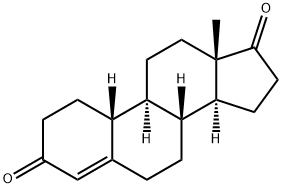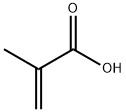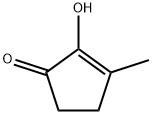Methallyl alcohol
Synonym(s):β-Methallyl alcohol;‘Isobutenol’
- CAS NO.:513-42-8
- Empirical Formula: C4H8O
- Molecular Weight: 72.11
- MDL number: MFCD00004737
- EINECS: 208-161-0
- SAFETY DATA SHEET (SDS)
- Update Date: 2024-12-18 14:15:32

What is Methallyl alcohol ?
Description
Methallyl alcohol is a colorless liquid with a pungent odor. Molecular weight= 72.12;Boiling point=114℃; Flash point=33℃. Hazard Identification (based on NFPA-704 M Rating System): Health 2, Flammability 3, Reactivity 0. Slightly soluble in water.
Chemical properties
CLEAR COLOURLESS LIQUID
The Uses of Methallyl alcohol
2-Methyl-2-propen-1-ol (MePro) attaches to hemicellulose acetylated galactoglucomannan (AcGGM) backbone providing it with pendant sites that allow subsequent cross-linking and hydrogel formation.
Production Methods
Methallyl alcohol is prepared by hydrolysis of methallyl chloride in a 10 wt% aqueous sodium hydroxide solution. Pure methallyl alcohol can be obtained by methanolysis of methallyl acetate in the presence of catalytic amounts of bases. Methallyl alcohol is used in the preparation of polymerizable esters.
General Description
A colorless liquid with a sharp pungent odor. Soluble in water and floats on water. Moderately toxic by ingestion and is an irritant to eyes and skin. Used in the chemical process industry.
Air & Water Reactions
Highly flammable and soluble in water.
Reactivity Profile
Methallyl alcohol may react vigorously with strong oxidizing agents. May react exothermically with reducing agents to release hydrogen gas.
Health Hazard
Exposure can cause irritation of eyes, nose and throat.
Potential Exposure
Used as an intermediate in organic synthesis
First aid
If this chemical gets into the eyes, remove any contact lenses at once and irrigate immediately for at least 15 min, occasionally lifting upper and lower lids. Seek medical attention immediately. If this chemical contacts the skin, remove contaminated clothing and wash immediately with soap and water. Seek medical attention immediately. If this chemical has been inhaled, remove from exposure, begin rescue breathing (using universal precautions, including resuscitation mask) if breathing has stopped and CPR if heart action has stopped. Transfer promptly to a medical facility. When this chemical has been swallowed, get medical attention. Give large quantities of water and induce vomiting. Do not make an unconscious person vomit.
storage
Color Code—Red: Flammability Hazard: Store in a flammable liquid storage area or approved cabinet away from ignition sources and corrosive and reactive materials. Prior to working with this chemical you should be trained on its proper handling and storage. Store in tightly closed containers in a cool, well-ventilated area away from oxidizers and other incompatible materials. Metal containers involving the transfer of this chemical should be grounded and bonded. Drums must be equipped with self-closing valves. Sources of ignition, such as smoking and open flames, are prohibited where this chemical is used, handled, or stored in a manner that could create a potential fire or explosion hazard.
Shipping
This compound requires a shipping label of “FLAMMABLE LIQUID.” It falls in Hazard Class 3 and Packing Group II.
Incompatibilities
Forms explosive mixture with air. Incompatible with strong acids, caustics, aliphatic amines, isocyanates, DMSO, oxidizers.
Properties of Methallyl alcohol
| Melting point: | -50 °C |
| Boiling point: | 113-115 °C(lit.) |
| Density | 0.857 g/mL at 25 °C(lit.) |
| refractive index | n |
| Flash point: | 92 °F |
| storage temp. | Flammables area |
| solubility | Chloroform (Slightly), Methanol (Slightly) |
| form | clear liquid |
| pka | 14.49±0.10(Predicted) |
| Specific Gravity | 0.8515 |
| color | Colorless to Almost colorless |
| Water Solubility | 11 g/100 mL |
| BRN | 969226 |
| Stability: | Light Sensitive |
| CAS DataBase Reference | 513-42-8(CAS DataBase Reference) |
| NIST Chemistry Reference | 2-Propen-1-ol, 2-methyl-(513-42-8) |
| EPA Substance Registry System | Methallyl alcohol (513-42-8) |
Safety information for Methallyl alcohol
| Signal word | Warning |
| Pictogram(s) |
 Flame Flammables GHS02  Exclamation Mark Irritant GHS07 |
| GHS Hazard Statements |
H226:Flammable liquids H315:Skin corrosion/irritation H319:Serious eye damage/eye irritation H335:Specific target organ toxicity, single exposure;Respiratory tract irritation |
| Precautionary Statement Codes |
P210:Keep away from heat/sparks/open flames/hot surfaces. — No smoking. P302+P352:IF ON SKIN: wash with plenty of soap and water. P305+P351+P338:IF IN EYES: Rinse cautiously with water for several minutes. Remove contact lenses, if present and easy to do. Continuerinsing. |
Computed Descriptors for Methallyl alcohol
New Products
4-Fluorophenylacetic acid 4-Methylphenylacetic acid N-Boc-D-alaninol N-BOC-D/L-ALANINOL Tert-butyl bis(2-chloroethyl)carbamate 3-Morpholino-1-(4-nitrophenyl)-5,6-dihydropyridin- 2(1H)-one Furan-2,5-Dicarboxylic Acid Tropic acid S-2-CHLORO PROPIONIC ACID ETHYL ISOCYANOACETATE 2-Bromo-1,3-Bis(Dimethylamino)Trimethinium Hexafluorophosphate (6-METHYL-[1,3]DITHIOLO[4,5-b]QUINOXALIN-2-ONE INDAZOLE-3-CARBOXYLIC ACID 4-IODO BENZOIC ACID (2-Hydroxyphenyl)acetonitrile 4-Bromopyrazole 5,6-Dimethoxyindanone 2-(Cyanocyclohexyl)acetic acid 4-methoxy-3,5-dinitropyridine 2-aminopropyl benzoate hydrochloride 1-(4-(aminomethyl)benzyl)urea hydrochloride diethyl 2-(2-((tertbutoxycarbonyl)amino) ethyl)malonate tert-butyl 4- (ureidomethyl)benzylcarbamate Ethyl-2-chloro((4-methoxyphenyl)hydrazono)acetateRelated products of tetrahydrofuran








You may like
-
 2-METHYL-2-PROPEN-1-OL CAS 513-42-8View Details
2-METHYL-2-PROPEN-1-OL CAS 513-42-8View Details
513-42-8 -
 2-Methyl-2-propen-1-ol CAS 513-42-8View Details
2-Methyl-2-propen-1-ol CAS 513-42-8View Details
513-42-8 -
 Methallyl alcohol 98% CAS 513-42-8View Details
Methallyl alcohol 98% CAS 513-42-8View Details
513-42-8 -
 1975-50-4 98%View Details
1975-50-4 98%View Details
1975-50-4 -
 2-HYDROXY BENZYL ALCOHOL 98%View Details
2-HYDROXY BENZYL ALCOHOL 98%View Details
90-01-7 -
 2-Chloro-1,3-Bis(Dimethylamino)Trimethinium Hexafluorophosphate 221615-75-4 98%View Details
2-Chloro-1,3-Bis(Dimethylamino)Trimethinium Hexafluorophosphate 221615-75-4 98%View Details
221615-75-4 -
 14714-50-2 (2-Hydroxyphenyl)acetonitrile 98+View Details
14714-50-2 (2-Hydroxyphenyl)acetonitrile 98+View Details
14714-50-2 -
 118753-70-1 98+View Details
118753-70-1 98+View Details
118753-70-1